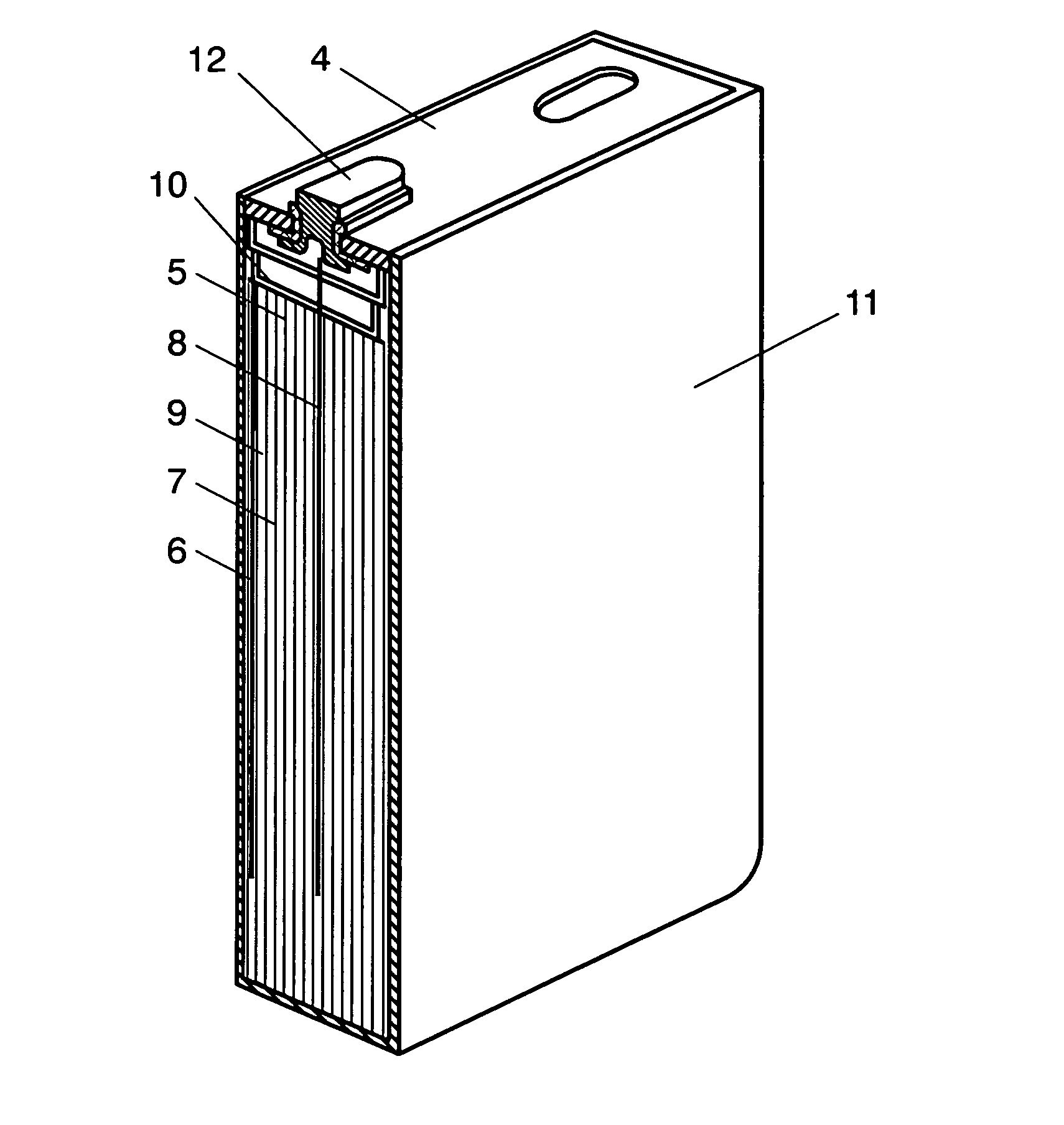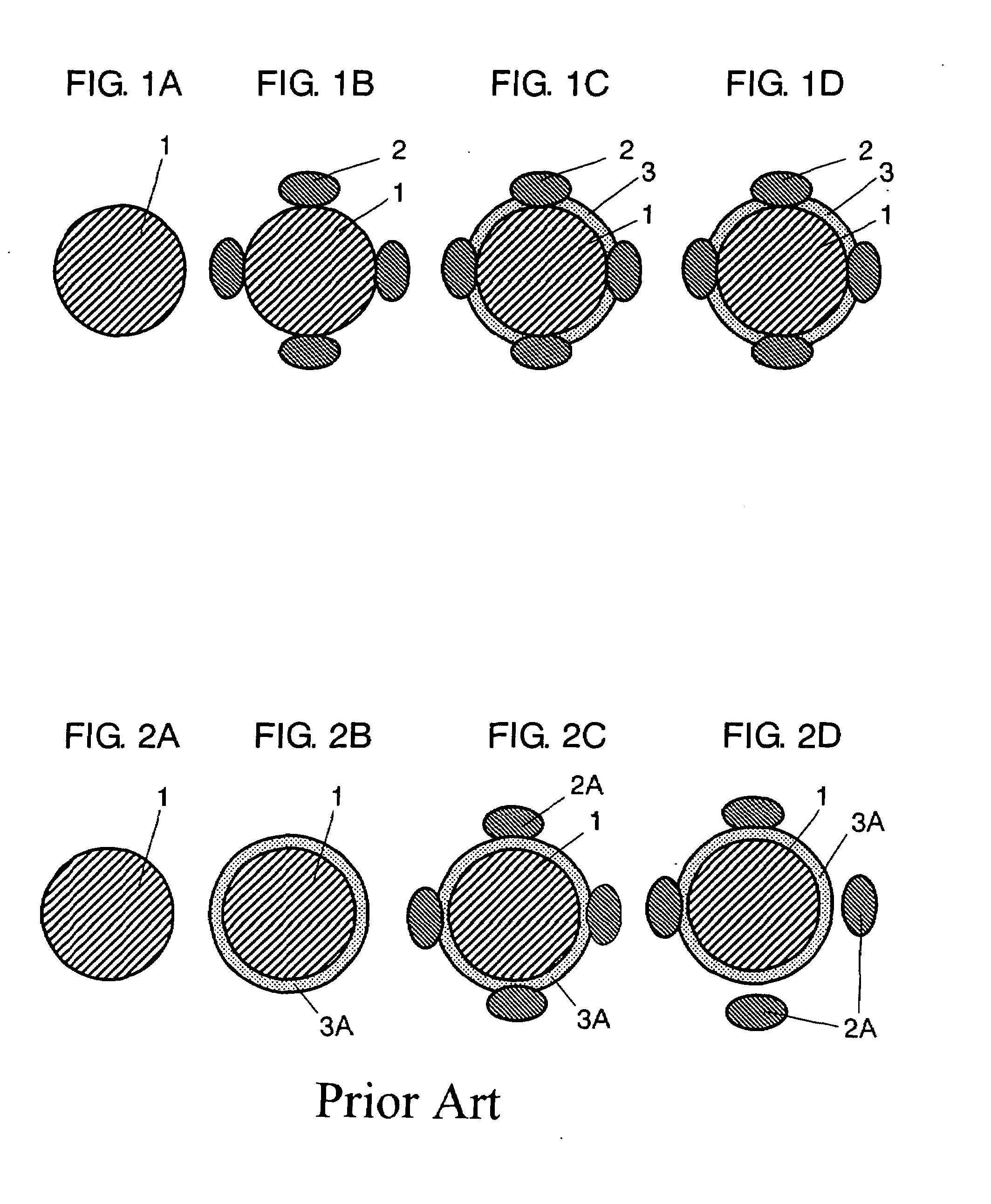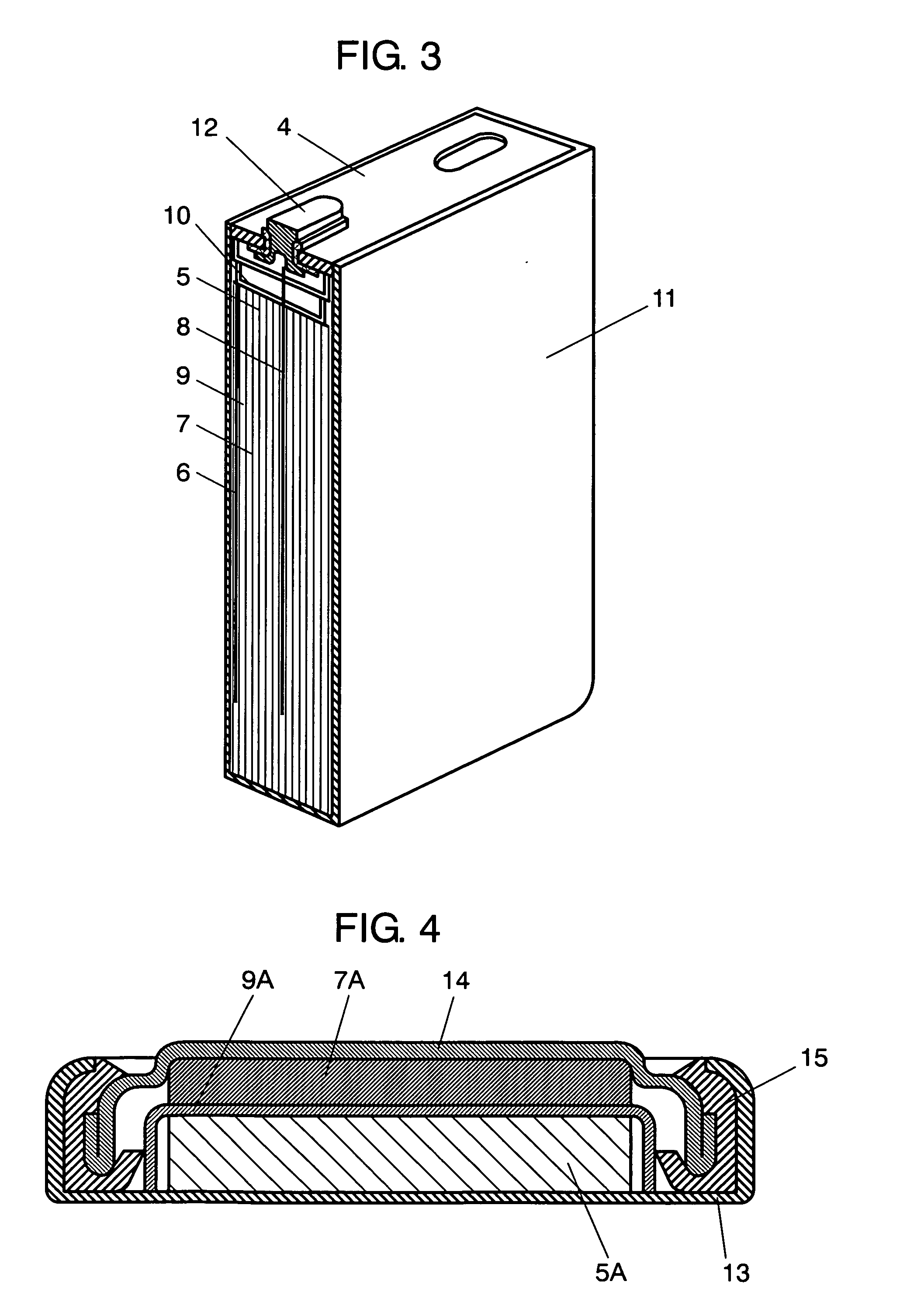Negative Electrode Material For Lithium Secondary Battery, Negative Electrode Using The Material, Lithium Secondary Battery Using The Negative Electrode, And Manufacturing Method Of Negative Electrode Material
a secondary battery and negative electrode technology, applied in the direction of cobalt compounds, electrochemical generators, cell components, etc., can solve the problems of limited lithium ions in graphite carbon materials, extremely bad electrode structure breakage, etc., to achieve excellent charge and discharge cycle characteristics, small irreversible capacity, and high capacity
- Summary
- Abstract
- Description
- Claims
- Application Information
AI Technical Summary
Benefits of technology
Problems solved by technology
Method used
Image
Examples
first exemplary embodiment
[0044]Hereinafter, advantages of the present invention are described using a specific example. First, a first exemplary embodiment of the present invention using the rectangular battery as shown in FIG. 3 is described. Preparation of a sample LE1 is first described.
[0045]A negative electrode material was synthesized as follows. Silicon powder and titanium powder were mixed such that an element molar ratio is 94.4:5.6. This mixed powder of 1.2 kg and stainless balls of 1 inch in diameter of 300 kg were inputted into a vibration ball mill machine. An atmosphere in the machine was substituted by argon gas, and then the powder was subjected to grinding treatment for 60 hours at amplitude of 8 mm and frequency of 1200 rpm. In this way, basic material particles 1 including Si—Ti (phase B) and Si (phase A) were obtained. It was confirmed from TEM observation of basic material particles 1 that crystallite 50 nm or less in size occupied at least 80% of the whole crystallite. When it was assu...
second exemplary embodiment
[0062]In a second exemplary embodiment of the present invention, results of formation and investigation of the coin-shaped battery as shown in FIG. 4 are described. First, a production procedure of a sample CE1 is described.
[0063]Negative electrode 7A was formed as follows. A negative material obtained in the same way as in the sample LE4 in the first exemplary embodiment, AB as the conductive agent, and PAA as the binding agent were mixed in a ratio of 82:20:10 in a weight ratio of solid contents, so that an electrode mixture was prepared. The electrode mixture was molded in a pellet form in diameter of 4 mm and thickness of 0.3 mm, and then dried for 12 hours at 200° C. In this way, negative electrode 7A was obtained. Negative electrode 7A described above was formed in an argon atmosphere in order to keep the slow oxidation condition of basic material particles 1.
[0064]Next, a formation procedure of positive electrode 5A is described. Manganese dioxide and lithium hydroxide were m...
PUM
| Property | Measurement | Unit |
|---|---|---|
| crystallite size | aaaaa | aaaaa |
| particle size | aaaaa | aaaaa |
| particle size | aaaaa | aaaaa |
Abstract
Description
Claims
Application Information
 Login to View More
Login to View More - R&D
- Intellectual Property
- Life Sciences
- Materials
- Tech Scout
- Unparalleled Data Quality
- Higher Quality Content
- 60% Fewer Hallucinations
Browse by: Latest US Patents, China's latest patents, Technical Efficacy Thesaurus, Application Domain, Technology Topic, Popular Technical Reports.
© 2025 PatSnap. All rights reserved.Legal|Privacy policy|Modern Slavery Act Transparency Statement|Sitemap|About US| Contact US: help@patsnap.com



